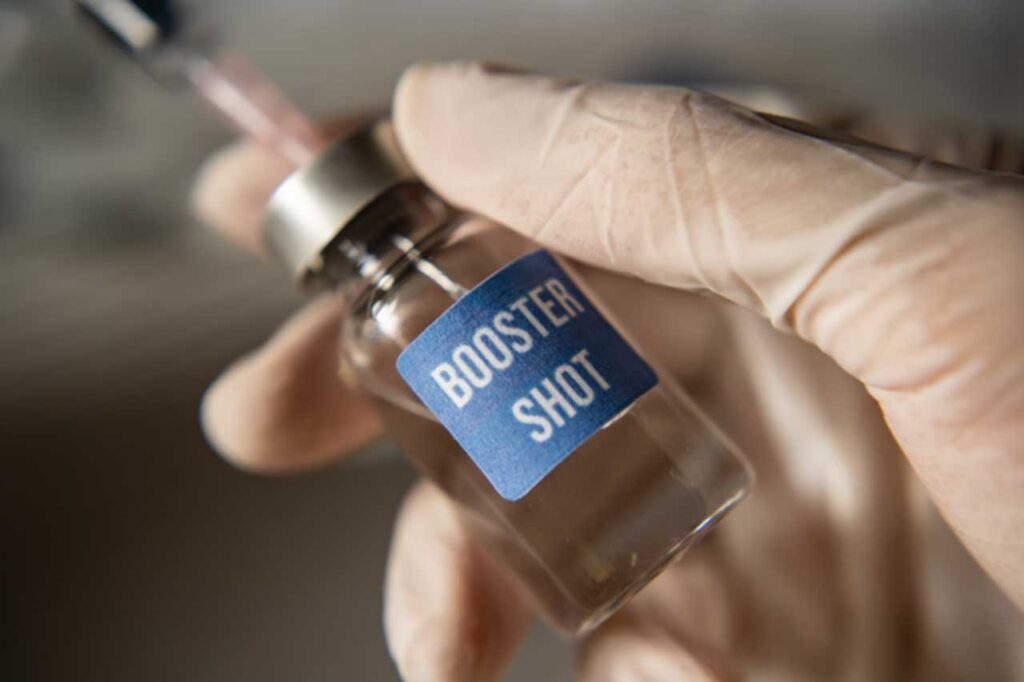
Article by Lalita Panicker, Consulting Editor, Views and Editor, Insight, Hindustan Times, New Delhi
Six months after announcing the $5 billion Project NextGen to develop treatments and vaccines that can “stay ahead of COVID-19,” the U.S. government has awarded 20 contracts that reveal what much of that sum will support. The Department of Health and Human Services (HHS) announced on 13 October that up to $1.2 billion will go to three vaccine developers aiming to develop better shots, adding to another $1 billion already awarded to companies that will test them in year long, 10,000-person clinical trials. Another half-billion will support development of monoclonal antibodies (mAbs) that can block SARS-CoV-2 infection. https://www.science.org/content/article/billions-boost-next-generation-covid-19-vaccine-and-treatments?
Project NextGen is far from the all-hands-on-deck effort of the $18 billion Operation Warp Speed, launched in May 2020, that led to the first COVID-19 vaccines in record time. But Jennifer Nuzzo, director of the Pandemic Centre at Brown University School of Public Health, says the program could “improve upon existing COVID vaccines and treatments [and] lead to discoveries that can help in our fight against other infectious diseases.”
Others say it will do too little to prepare the world for the next pandemic. “The worst thing we could do is leave people with the sense that this is going to be the solution to the future,” says Michael Osterholm, an epidemiologist at the University of Minnesota who was on a steering group of researchers that wrote a detailed R&D roadmap for vaccines that could protect against many coronaviruses, not just SARS-CoV-2. But, he concedes, “It’s a start.”
Current COVID-19 vaccines only prevent symptomatic disease for a few months and are even less effective at preventing infection. Among the new awardees hoping to do better are CastleVax and Codagenix, which have developed vaccine candidates that will be sprayed into the nose. The goal is to stimulate immunity at the mucosal membranes, a strategy that might prove better at thwarting SARS-CoV-2 than current shots. A third vaccine maker, Gritstone bio, uses an injected formulation designed to protect against a broader range of current and future SARS-CoV-2 variants.
Each company will receive $300 million to $400 million but will only be paid if they hit milestones such as meeting regulatory requirements for the clinical trials. Florian Krammer, a virologist at the Icahn School of Medicine at Mount Sinai who co-invented the CastleVax vaccine, applauds the decision to award the money to start-up companies pursuing the riskiest, most innovative research, rather than the Big Pharma vaccine makers that Warp Speed favoured. “It’s going to allow us to move forward,” Krammer says.
In contrast to the vaccines from Moderna and the Pfizer-BioNTech collaboration, which consist of strands of messenger RNA (mRNA), CastleVax and Codagenix use live viruses that can infect cells in mucosal membranes, which produce SARS-CoV-2 proteins. CastleVax stitches the gene for SARS-CoV-2 spike protein inside of Newcastle Disease virus, which does not harm humans. Codagenix uses a version of SARS-CoV-2 it has engineered to not cause disease but still stimulate the immune system.
Gritstone relies on mRNA. But unlike the mRNA in current vaccines, which codes for the SARS-CoV-2 surface protein, spike, Gritstone’s codes for both spike and regions of the virus that remain conserved across a wide range of coronaviruses. The goal is to trigger both antibodies specific to spike and T cells that work against a broad range of variants. The mRNA in the Gritstone vaccine also makes copies of itself in human cells after being injected, potentially producing large amounts of these viral pieces to generate a stronger immune response.
Regeneron will receive the lion’s share of the money, $326 million, to develop a better mAb. The company says its candidate binds to a conserved region of the virus, reducing the risk that variants will escape its powers. ModeX Theraputics—whose scientific leaders include former National Institutes of Health Director Elias Zerhouni—is developing antibodies that aim to thwart variants by targeting several viral sites. Finally, Vir Biotechnology will attempt to deliver mAbs via mRNA technology, injecting the code for each antibody rather than the molecule itself. That would allow a simple shot of mRNA to take the place of a complex infusion, and ease the rapid redesign for a newly circulating variant.
////
An industry-academic initiative announced on 18 October aims to create the largest ever database of genomes exclusively from people with African ancestry. Four biopharma companies contributing $80 million have teamed up with Meharry Medical College to launch the effort, which hopes to recruit up to 500,000 African Americans and people from Africa and combine their DNA and medical data into a biobank for health studies. https://www.science.org/content/article/new-initiative-sequence-half-million-genomes-people-african-ancestry-health-studies?
“This is an historic partnership,” says James Hildreth, president and CEO of Meharry, a historically Black college in Nashville, Tennessee, of the initiative, called Together for Changing Healthcare for People of African Ancestry through an InterNational Genomics & Equity (Together for CHANGE). “Nothing like this has ever happened before, when multiple drug companies partner with an academic institution, especially an HBCU [historically Black college or university], to do something like this.”
People of African ancestry are among the most genetically diverse in the world, yet they make up less than 0.5% of participants in genetic studies and are still underrepresented in major genetic databases. In the UK Biobank, one of the largest in the world, about 1.6% of the half-million participants identify as Black or Black British. And although the U.S. National Institutes of Health’s (NIH’s) All of Us study aims to build a diverse biobank, only about 17% of the roughly 500,000 fully enrolled participants recruited so far identify as Black, African American, or African.
The lack of representation means disease-causing mutations unique to Africans are missed. And tools for predicting disease risks or treating patients that were developed with data from those of European descent—may not work as well in patients with African ancestry. These “are aspects of human genomes that can only be studied in African populations,” says genetic epidemiologist Charles Rotimi, scientific director of NIH’s National Human Genome Research Institute.
Regeneron, which has partnered with the UK Biobank and other biobanks, first reached out to Meharry about the project in July of 2020, when the COVID-19 pandemic was wreaking havoc on Black communities’ health in the United States. As the first medical school in the U.S. South for African Americans, Meharry was ideal to spearhead the new initiative, says Lyndon Mitnaul, executive director of research initiatives at Regeneron’s Genetics Centre.
Three more companies have since joined: AstraZeneca, Novo Nordisk, and Roche will each contribute $20 million over an initial 5 years. Regeneron will also provide $20 million and the sequencing power for the project, which will include at least 50,000 whole genomes, as well as exomes—the protein-coding DNA of the genome—and genotyping of all samples.
However, the funding level so far is modest compared to the All of Us project, which has cost more than $2 billion since 2015.
About $30 million of the funding will be set aside for efforts to increase the number of Black scientists within the United States and in Africa. These include research grants, fellowships, and graduate programs in the field of genomics, according to Hildreth.
The project will be led by the recently formed Diaspora Human Genomics Institute (DHGI), a new institute at Meharry. It will recruit participants receiving medical care there and at other health systems run by HBCUs, drawing on participants’ deidentified medical records for clinical data. To capture the broad cultural and genetic diversity of Africa, Mitnaul says the project is also looking to recruit academic partners from across the African continent. They have already identified some partners, such as the University of Zambia.
In a recognition of Black patients’ past exploitation by the medical and scientific community, the DHGI will consult with local Black communities on research directions. The institute will also rely on an ethics advisory committee that includes Black community leaders, an ethicist from Africa, a faith leader, and other experts to ensure all research activities are ethical and culturally appropriate. What’s driving the new project, Hildreth says, is Black communities and researchers “having a seat at the table.”
///
It’s no wonder so many are willing to pay more than $1,000 a month out of pocket to get their hands on drugs like semaglutide (Ozempic and Wegovy) or tirzepatide (Mounjaro). The benefits of these drugs, which are part of a new class called GLP-1 receptor agonists, include significant and rapid weight loss, blood sugar control, and improved life quality; they are unprecedented in a setting where surgery has long been considered the most effective long-term option.
On the flip side, the desire for rapid weight loss and better blood sugar control also comes with an unexpected cost. Many women living with obesity who take oral contraceptives are unaware that these drugs – especially Mounjaro – can interfere with the absorption of birth control pills and how well they work, making an unintended pregnancy more likely. https://www.medscape.com/s/viewarticle/997498?ecd=wnl_edit_tpal_etid5971396&uac=398271FG&impID=5971396
Neel Shah, MD, an endocrinologist and associate professor at the University of Texas Health Science Centre at Houston, said he has had several patients become pregnant without intending to.
“It was when Mounjaro came out on the market when we started using it,” he said of the drug the FDA approved for type 2 diabetes in 2022. “It [the warning] was in the product insert, but clinically speaking, I don’t know if it was at the top of providers’ minds when they were prescribing Mounjaro.”
When asked if he believed that we were going to be seeing a significant increase in so-called Mounjaro babies, Shah was sure in his response.
“Absolutely. We will because the sheer volume [of patients] will increase,” he said.
One of the ways that drugs like Mounjaro work is by delaying the time that it takes for food to move from the stomach to the small intestine. Although data is still evolving, it is believed that this process – delayed gastric emptying – may affect the absorption of birth control pills.
Shah said another theory is that vomiting, which is a common side effect of these types of drugs, also affects the pills’ ability to prevent pregnancy.
And “there’s a prolonged period of ramping up the dose because of the GI [gastrointestinal] side effects,” said Pinar Kodaman, MD, PhD, a reproductive endocrinologist and assistant professor of gynecology at the Yale School of Medicine in New Haven, CT.
“Initially, at the lowest dose, there may not be a lot of potential effect on absorption and gastric emptying. But as the dose goes up, it becomes more common, and it can cause diarrhea, which is another condition that can affect the absorption of any medication,” she said.
Roughly 42% of women in the U.S. are obese, 40% of whom are between the ages of 20 and 39. Although these new drugs can improve fertility outcomes for women who are obese (especially those with polycystic ovary syndrome, or PCOS), only one – Mounjaro – currently carries a warning about birth control pill effectiveness on its label. Unfortunately, it appears that some doctors are unaware or not counselling patients about this risk, and the data is unclear about whether other drugs in this class, like Ozempic and Wegovy, have the same risks.


